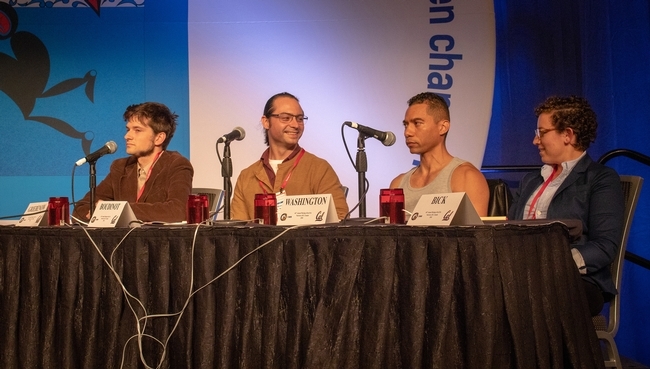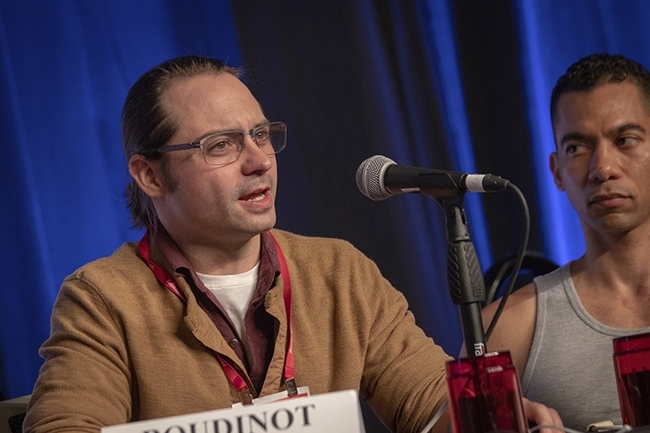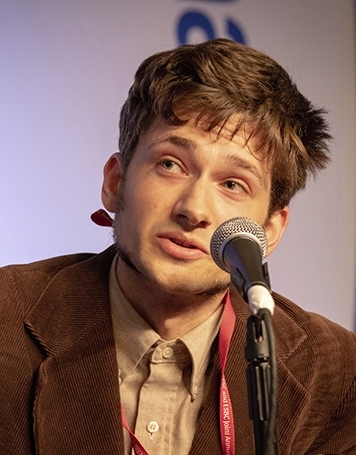- Author: Kathy Keatley Garvey

Know the answer? The UC Davis Entomology Games Team--competing in the Entomological Society of America's Entomology Games Nov. 15 in Vancouver, British Columbia--did, and they went on to win the national championship.
The answer: The Master Gardener program.
The UC Davis team members, all doctoral candidates in the Department of Entomology and Nematology, are Zachary Griebenow of the Phil Ward lab, captain; Jill Oberski of the Ward laboratory; Erin “Taylor” Kelly of the Geoffrey Attardo lab; and Madison “Madi” Hendrick of the Ian Grettenberger lab. They won the championship round by edging Alabama's Auburn University team, 75-70.
Congrats, UC Davis, on your fourth championship!
The highly anticipated event is a lively question-and-answer, college bowl-style competition on entomological facts played between university-sponsored student teams. The question categories are biological control, behavior and ecology, economic and applied entomology, medical, urban and veterinary entomology, morphology and physiology, biochemistry and toxicology, systematics and evolution integrated pest management and insect/plant interactions.
The student-quiz event, launched in 1982, was formerly known as the Linnaean Games. To get to the nationals, teams first have to win first or second at the branch level. UC Davis won the regional championship at the Pacific Branch meeting in April. UC Riverside placed second. The branch includes 11 Western states, part of Canada and Mexico, and several U.S. territories.
So, getting to the nationals is not easy.
"It was so exciting to see the high level of knowledge at the games--I'm not surprised, because the teams have worked hard to prepare, strategize, and qualify for the championships," said Gamesmaster Alix Whitener, an ESA board-certified entomologist who coordinated the Entomology Games and presided over the event. "It was exciting to have some close games, too!"
The ESA meeting, themed "Entomology as Inspiration: Insects Through Art, Science and Culture," opened Nov. 13 and continues through Nov. 16. It is a joint meeting with the Entomological Society of Canada and the Entomological Society of British Columbia.
The Entomology Games championship match will be posted soon on ESA's YouTube channel. The full bank of questions will be loaded on this site. The previous UC Davis championships:
- 2018: The University of California team (UC Davis/UC Berkeley) defeated Texas A&M. Members of the UC Team: captain Ralph Washington Jr., then a UC Berkeley graduate student with a bachelor's degree in entomology from UC Davis; doctoral students Brendon Boudinot, Jill Oberski and Zachary Griebenow of the Phil Ward lab, and doctoral student Emily Bick of the Christian Nansen lab.
- 2016: UC Davis defeated the University of Georgia. Members of the UC Davis team: captain Ralph Washington Jr., Brendon Boudinot and Emily Bick.
- 2015: UC Davis defeated the University of Florida. Members of the UC Davis team: captain Ralph Washington Jr., and members Brendon Boudinot, Jessica Gillung and Ziad Khouri
Ready to answer some more questions--questions that were asked at the 2022 Entomology Games?
- The principal blood sugar of insects is a disaccharide called what? Answer: Trehalose.
- All Neuroptera pupate within shelters spun from silk produced by what anatomical structure? Answer: Malpighian tubules
You got them both correct, of course?
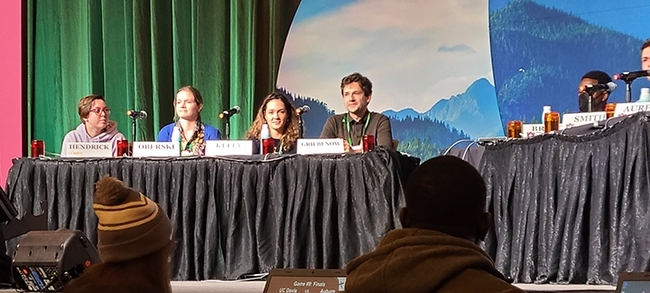
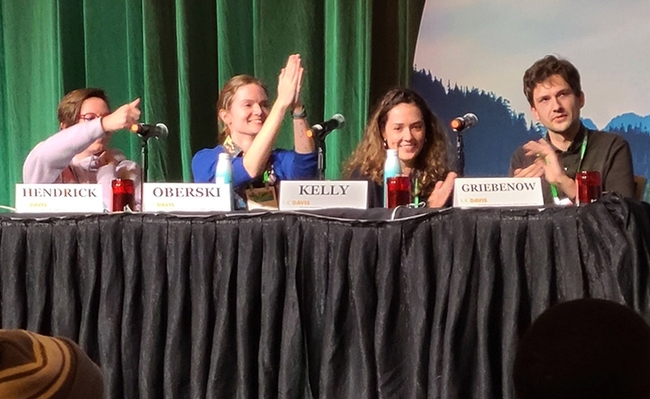
- Author: Kathy Keatley Garvey

- Medical entomologist-geneticist Geoffrey Attardo, assistant professor, will receive the Medical, Urban, and Veterinary Entomology Award
- Doctoral student Erin Taylor Kelly of the Geoffrey Attardo laboratory will receive the Student Leadership Award
- Undergraduate student Gwendolyn "Gwen" Erdosh of the Louie Yang lab will receive the inaugural Dr. Stephen Garczynski Undergraduate Research Scholarship
Geoffrey Attardo is a global expert on vectorborne diseases, and renowned for his groundbreaking work on tsetse flies. Attardo, who joined the UC Davis Department of Entomology and Nematology in 2017 from the Yale School of Public Health's Department of Epidemiology of Microbial Diseases, “excels not only as a researcher, but as a teacher, mentor, scientific illustrator, macro photographer,videographer and science communicator,” said UC Davis distinguished professor Bruce Hammock in his letter of nomination. (See news story)
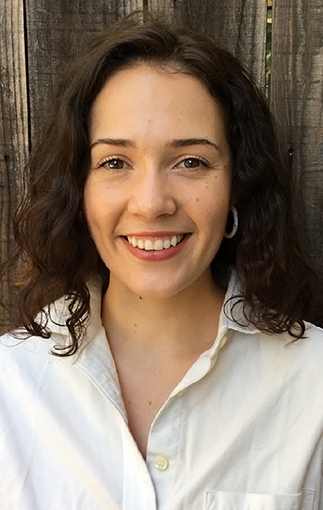
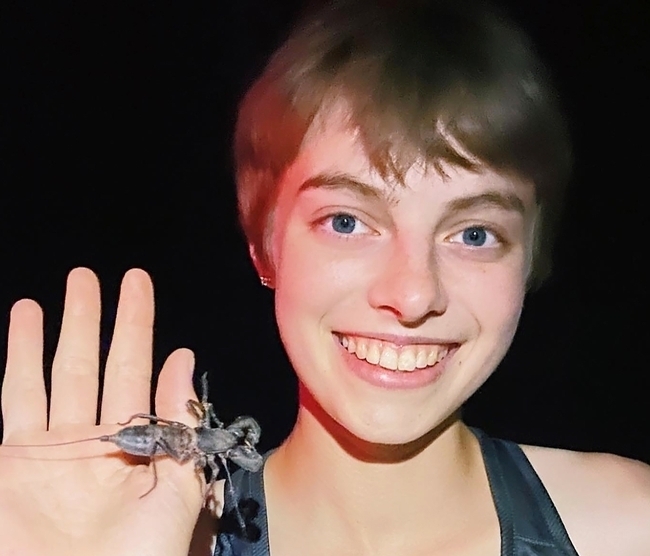
Entomology Games. The UC Davis Entomology Games team will be competing for regional honors and national representation. The team includes doctoral candidate Zachary Griebenow of the Phil Ward lab, captain; doctoral candidate Jill Oberski of the Ward lab; doctoral student Erin “Taylor” Kelly of the Geoffrey Attardo lab; and doctoral student Madison “Madi” Hendrick of the Ian Grettenberger.
The Entomology Games is a lively question-and-answer, college bowl-style competition on entomological facts played between university-sponsored student teams. It was formerly known as the Linnaean Games. The preliminary round is from 5 to 6 p.m., April 10. Plans are to hold three rounds with questions from each of the 10 categories: Biological Control, Behavior and Ecology, Economic and Applied Entomology, Medical-Urban-Veterinary Entomology, Morphology and Physiology, Biochemistry and Toxicology, Systematics and Evolution, Integrated Pest Management and Plant-Insect Interactions, History of Entomology, and Entomology in Popular Culture. (See UC Davis news story)
The final round is from 8 to 10 p.m., April 11. Both the championship team and the runner-up team will represent PBESA at the Entomological Society of America (ESA) meeting, Nov. 13-16 in Vancouver, British Columbia. Last year's national champion was the University of Hawaii, which edged Texas A&M University.
UC Davis has scored three national championships since 2015. In 2018, the University of California team won the national championship, defeating Texas A&M. The team included captain Ralph Washington Jr., then a UC Berkeley graduate student with a bachelor's degree in entomology from UC Davis; doctoral students Brendon Boudinot, Jill Oberski and Zachary Griebenow of the Phil Ward lab, and doctoral student Emily Bick of the Christian Nansen lab.
UC Davis won the national competition in both 2016 and 2015, defeating the University of Georgia in 2016, and the University of Florida in 2015.
A number of other UC Davis faculty and students will participate in the PBESA meeting. (See schedule.)
PBESA encompasses 11 Western states, parts of Canada and Mexico and several U.S. territories.
- In the United States: Alaska, Arizona, California, Hawai'i, Idaho, Montana, Nevada, Oregon, Utah, Washington, Wyoming
- U.S. Territories: American Samoa, the Federated States of Micronesia, Guam, Johnston Atoll, Commonwealth of the Northern Mariana Islands, Midway Islands, Wake Island
- In Canada: Alberta, British Columbia, Northwest Territories, Saskatchewan, Yukon
- In Mexico: Baja California, Baja California Sur, Sinaloa, Sonora
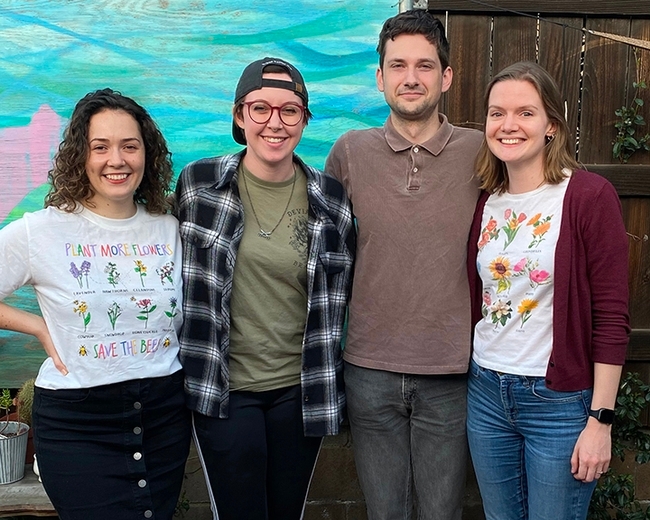
- Author: Kathy Keatley Garvey
"Kleptopharmacophagy, a newly described behavior recently observed in milkweed butterflies, is characterized by adult butterflies feeding on milkweed caterpillars. What type of alkaloids do the adult butterflies presumably gain as a result?"
That was one of the questions posed during the Entomology Games at the 2021 Entomological Society of America (ESA) meeting.
What's the answer? Pyrrolizidine alkaloids.
What, you ask, are the Entomology Games? A lively question-and-answer, college bowl-style competition on entomological facts played between university-sponsored student teams, as ESA says.
If you've ever been to the Entomology Games (formerly the Linnaean Games), you know how wonderfully educational and purely entertaining they are. Check out the list of YouTube videos in the championship matches. The 2018, 2016 and 2015 videos are there. The UC Entomology Games Team (UC Davis and UC Berkeley) won the nationals in 2018, and UC Davis in both 2016 and 2015.
Next month is the Pacific Branch, Entomological Society of America (PBESA) competition, with the championship team and runner-up team eligible to complete in the nationals.
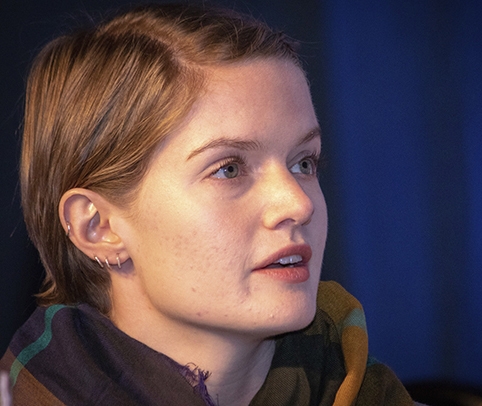
The PBESA meeting takes place April 10-13 in the Hyatt Regency Sonoma Wine Country. Santa Rosa. The preliminary round is from 5 to 6 p.m., April 10. Plans are to hold three rounds with questions from each of the 10 categories: Biological Control, Behavior and Ecology, Economic and Applied Entomology, Medical-Urban-Veterinary Entomology, Morphology and Physiology, Biochemistry and Toxicology, Systematics and Evolution, Integrated Pest Management and Plant-Insect Interactions, History of Entomology, and Entomology in Popular Culture. (See 2021 sample questions.)
The final round is from 8 to 10 p.m., April 11. Then the top two PBESA teams will head to the nationals. The Nov. 13-16 ESA meeting n Vancouver, British Columbia is a joint meeting with the Entomological Society of Canada (ESC), and the Entomological Society of British Columbia (ESBC). The theme: "Entomology as Inspiration: Insects through Art, Science, and Culture."
Some of the questions asked at previous matches have involved the work entomologists affiliated with the UC Davis Department of Entomology and Nematology:
- Emerita Mary Lou Flint, a longtime leader of the UC Statewide Integrated Pest Management (UC IPM) Program and an Extension entomologist based in the department;
- Rebecca Godwin, who received her doctorate from UC Davis and is now an assistant professor of biology at Piedmont University, Demorest, Ga.; and Jason Bond, the Evert and Marion Schlinger Endowed Chair and associate dean, UC Davis College of Agricultural and Environmental Sciences.
- Robbin Thorp (1933-2019), distinguished emeritus professor known for his expertise on bumble bees, including Franklin's bumble bees, now feared extinct
Q. Mary Lou Flint's textbook, IPM in Practice; Principles and Methods of Integrated Pest Management, cites the management of what invasive plant, first introduced to North America from Europe, as an "excellent example of classical biological control in the Western US?" This plant was controlled by importing the European chrysomelid beetle Chrysolina quadrigemina.
A. Klamath weed / St. John's Wort / Hypericum perforatum
Q: In early 2021, (Rebecca) Godwin and (Jason) Bond described 33 new species of the trapdoor spider genus Ummidia, including a species named in honor of what alt-country singer-songwriter, who was the most-nominated woman at the 2019 Grammy Awards? She has had success both as a solo artist and as a member of the all-female supergroup The Highwomen, and her annual music festival "Girls Just Wanna Weekend" is held in Mexico near the type locality of her namesake trapdoor spider. Name this singer.
A: Brandi Carlile
Q: What bee species, only known from California and Oregon, was added to the Endangered Species List in September 2021?
A: Franklin's bumble bee (Bombus franklini)
How about some more questions?
Q. Earwigs are known for their maternal care, but the species Anechura harmandi goes above and beyond in its support. What describes the extreme contribution of A. harmandi mothers to the success of their offspring?
A: Matriphagy; the survival rate of the offspring is increased when they consume their mother after parental care is complete
Q: Halictid bees parasitized by the strepsipteran species Halictoxenos borealis were recently shown to exhibit unusual behavior when visiting flowers. The parasitized bees did NOT collect or eat pollen; they instead bent their abdomens downward and pressed them against the flower. According to the authors of this study, how did this behavior directly benefit the first-instar strepsipterans living in the bees?
A: Pressing the abdomen against the flower makes it easier for the mobile first-instar strepsipteran larvae to move onto the flower and wait for a new host bee to arrive
Q: Developed during World War II by USDA employee Samuel Gertler, what widely used chemical compound can be synthesized using the reagents diethylamine and meta-toluic acid?
A: DEET / diethyltoluamide / n,n-diethyl-meta-toluamide / n,n-diethyl-3-methylbenzamide
Q: Most contact insecticides are able to penetrate the insect exoskeleton because they contain a fat-soluble compound. What is the term for this type of chemical compound?
A: Lipophilic compound
Q: The solitary bee Eucera pruinosa (formerly in the genus Peponapis) is an efficient pollinator of what crop? There are multiple correct answers, but one of them is particularly appropriate, considering what day it is.
A: Pumpkins, cucumbers, squash, and other cucurbits
Q: Animals in the livestock, poultry and aquaculture industries often consume feed that has been supplemented by insect protein. This protein frequently comes from Hermetia illucens, a dipteran known by what common name?
A: Black soldier fly
Q: The leafcutter ant, Atta cephalotes, has hardened, distinctly sharpened mandibles that allow it to efficiently cut leaves. What mineral found in the mandibles provides this distinct sharpness? This mineral is also a metallic element with atomic number 30 on the periodic table.
A: Zinc
Q: What entomological acronym was used to refer to a group of American women who worked as auxiliary service pilots for the US during World War II?
A: WASP (Women Auxiliary Service Pilots)
Q: In 2018, Rachel Brosnahan won an Emmy for Outstanding Lead Actress in a Comedy Series, for playing a character with what dipteran nickname?
A: Midge (Miriam ‘Midge' Maisel from The Marvelous Mrs. Maisel)
Q: What British guitarist, who died in 2001, was memorialized by a pine tree planted in Los Angeles' Griffith Park? In an unfortunate, and somewhat ironic, development, the pine tree was later killed by an infestation of beetles.
A: George Harrison of The Beatles
Q: Keteoko is a traditional "honey feast" celebrated by the Enawene-Nawe people indigenous to the Brazilian Amazon. In order to collect large amounts of wild honey for the feast, the Enawene-Nawe have developed their own classification system, based on morphology, behavior, nest structure, and honey flavor, for identifying native species of what type of bee? Please answer with the common or scientific name of a tribe of Apidae.
A: Meliponini, stingless bees
Q: What insect family is essential for the production of iron gall ink? The ink is made using tannins extracted from oak galls, which are induced by larvae of this family.
A: Cynipidae
Did you get them all correct?
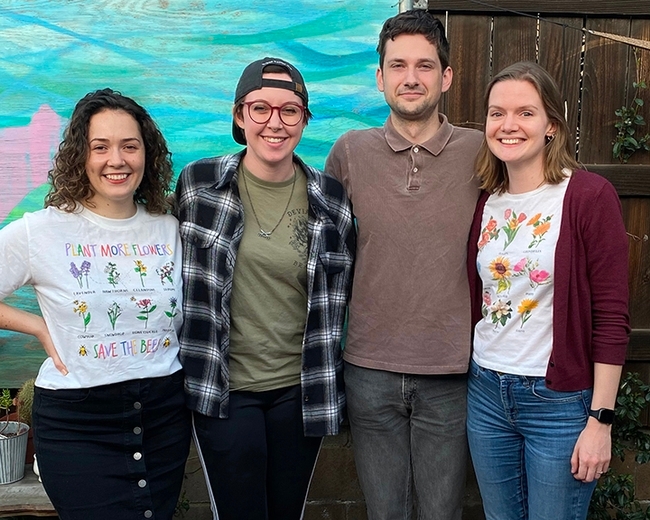
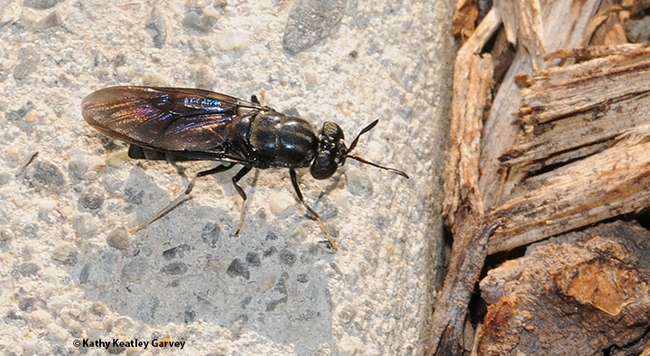
- Author: Kathy Keatley Garvey
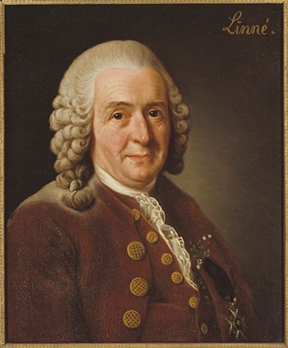
And rightfully so. It's a stand against racism and a step toward a more diverse and inclusive organization.
And frankly, it's a more appropriate name.
ESA, founded in 1889, launched the games in 1982, naming them for Swedish scientist-physician Carl Linnaeus (1707-1778), the father of taxonomy. He was a botanist and zoologist as well as a physician.
ESA describes The Games as a "fast-paced, college-bowl style contest in which students from various colleges and universities test their knowledge by answering questions on insect science. Students compete first at the regional branch level, and then the winning teams compete each year at the national level at ESA's Annual Meeting."
A petition on Research Gate drew some 1500 approvals for the name change. However, many members began seeking a name change several years ago.
Here's why: Linnaeus' classifications of the human race.
Linnaeus made "offensive, race-based classifications of humans that helped form a basis for racism in science," according to a Request for Change on Research Gate. "The recent police murders of George Floyd, Breonna Taylor, Ahmaud Arbery, Tony McDade, and too many other Black Americans have put a national spotlight on racial injustice in our country. White supremacy and racism have existed in academic and scientific institutions since their advent, but these events have catalyzed heightened reflection and action around justice within academia."
Other points involving the name switch from Linnaean Games to Entomology Games:
- Linnaeus was not an entomologist
- The trivia questions deal mostly with insect science and entomologists, not taxonomy.
- Most people outside the world of entomology probably cannot relate to the meaning of the Linnaean Games, but they can to "Entomology Games"
As ESA president Alvin Simmons, a research entomologist at USDA-ARS, U.S. Vegetable Laboratory, Charleston, S.C., said in the ESA news release: “National events this year have brought issues of diversity and inclusion within our discipline and our Society to the forefront. Ultimately, the board believed that the loss of any student competitors who felt unwelcome because of the name of the Games went against ESA's commitment to diversity, inclusion, and students as the future of entomology. A name can be replaced, but each entomologist brings a unique and valuable contribution to our Society that is irreplaceable. The Entomology Games will continue ESA's traditions of fun, competition, and school pride.”
ESA published a statement on Why Black Lives Matter to Entomology on June 1, which said in part: "Historically, people of color have been less likely to choose careers in the life sciences, and even today black entomologists make up 2.7 percent of the ESA membership, up from 2 percent in 2012. Every time a person is kept from contributing to our understanding of entomology due to systemic inequities, our entire discipline is impoverished."
Meanwhile, due to the coronavirus pandemic, ESA will conduct its 2020 ESA meeting in a virtual format. From its website: "We are excited to embrace the virtual format and build an exceptional meeting that will truly embody the spirit of Entomology for All—a meeting where all insect scientists can participate and share their work, regardless of location, specialty area, or ability to travel. Entomology 2020 will feature multiple live-streams running simultaneously November 16-19. On-demand content will be available from November 11-25."
University of California teams have done well in the The Games. A UC Davis team won the national championship in 2015, and a UC Berkeley-UC Davis team won two national championships, one in 2016 and one in 2018. The 2016 Games were deemed international as it occurred during a joint meeting of ESA and the International Congress of Entomology (ICE) in Orlando, Fla. (Walter Leal, UC Davis distinguished professor and USDA-ARS research entomologist Alvin Simmons co-chaired the ICE meeting.)
The 2019 UC team made it to the finals but didn't place. It was captained by Ralph Washington Jr., a UC Berkeley public policy graduate student who received his bachelor's degree in entomology at UC Davis. He was joined by three UC Davis Department of Entomology and Nematology doctoral students: Brendon Boudinot, Zachary Griebenow and Jill Oberski, all of the Phil Ward lab, and alternates Miles Dakin of the Christian Nansen lab and Hanna Kahl of the Jay Rosenheim lab.
Washington captained all four recent teams, and Boudinot helped anchor all of them.
Statistics include:
- 2018: UC won the national championship (this links to a UC Davis news story) in Vancouver, B.C., defeating Texas A&M Graduates, with Washington captaining the team and joined by UC Davis graduate students Boudinot, Oberski and Griebenow of the Phil Ward lab, and Emily Bick of the Christian Nansen lab. (No video of the championship round)
- 2017: The UC team did not compete. (Texas A&M won the national championship; see championship round on YouTube)
- 2016: UC won the national and international championships at the joint meeting of ESA and ICE in Orlanda, Fla., defeating the University of Georgia. (See championship round on YouTube)
- 2015: UC won the national championship at the games held in Minneapolis, Minn., defeating the University of Florida. (See championship round on YouTube)
